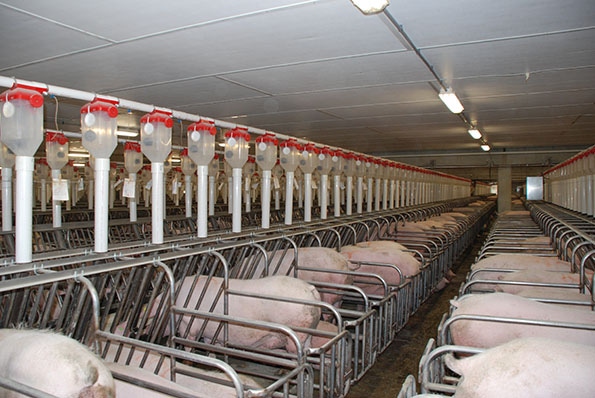What factors are driving pork production expansion?
May 20, 2016

With current hog prices over $77 (based on the CME Index) and recent futures prices moving in a positive direction, the profit outlook for live hog production has improved in the last few weeks. Lean hog prices have also improved by $10 per hundredweight, or about $20 per head over the past month, while cutout values have improved by $3 per hundredweight, or about $6 per head. All things being equal, packer margins have declined by $14 per head. However, all things are never equal, and I suspect that with the improvement in exports, especially to China, byproduct sales will pick up some of that slack since packers have the opportunity to extract more value from the pig.
Feed price increases over the last month have partially offset higher producer margins. Corn has increased about 10 cents per bushel, but significant moves in soybean meal prices (plus-$65 per ton) and dried distillers grain (plus-$25 per ton), have increased costs for pig production. Depending on formulation of diets, these commodity moves will most likely increase the cost of production by about $5 per head.
So far, this rally has been seasonal, following typical changes as pork supplies are reduced. Although futures have improved over the past month, December 2016 and June 2017 futures are up about $2 per hundredweight or less, indicating to me that there isn’t consistent trader optimism regarding pork demand yet.
With that economic backdrop, I am convinced pork expansion will proceed over the next few years. But what drives pork production in the future?
New packer capacity
I have spent my life in the pig industry and never before have we seen a dynamic like today. Within the next 18 months, it would appear we will have an additional 30,000 head of harvest capacity in the United States. This includes new plants in Sioux City, Iowa, Cold Spring, Mich., Windom, Minn. and New Hope, Mo. The two largest of these plants will be interested in double shifting at some point, adding another 20,000 head of daily capacity. There is also a desire by another company to build an Iowa packing plant, which was turned down by Mason City, Iowa. Where will they turn to next?
The impact will rely heavily on additional production so we can fill some of the new capacity. Once operational, daily capacity (single shift) will help resolve fears of fourth quarter supply issues for some time. We really need to be thinking about how we increase demand for more product at a price that is profitable.
Industry financial strength
In my opinion, today’s financial strength of the producers and packer-processors in the industry has never been stronger. Sturdy balance sheets provide a lot of latitude when looking to grow your business. Many of our clients have been disciplined in their growth, relative to their financial ability, but some growth currently is and will occur because of the strong financial position, management ability, tax situation and other factors.
Packer margins have been strong as well, and packers will not want to give up hard-earned market share easily. In the short-term, this is good for the producers; if it drives too much expansion, we will all pay the price down the road.
Export demand
Export demand for U.S. pork has been one of the great stories in agriculture. We have fundamentally changed how U.S. pork is viewed around the world and have become leaders with our ability to produce, package and deliver a great product at globally competitive prices. While there have been many headwinds to growing that export market, the rapid changes in China due to policy, provides a growing opportunity for U.S. pork.
Economists have indicated that the reduction in the Chinese breeding herd has been the equivalent of eliminating all U.S., Canada and Mexico herds. The impact has been staggering increases in their pork prices and rapidly growing imports to offset those costs for the consumer. Imports from the United States are growing, the European Union has captured more of that market. While this is a great opportunity at home, producers (and others) in China are working hard to replace production that has been lost over the past two years. They will try to remain largely self-sufficient in pork.
Summary
With the additional packer capacity that is being constructed today, we will no doubt see additional production coming on line. My guess is that we will add 2% in breeding herd numbers in each of the next two years and continue to wean an additional 1.5% more pigs per litter annually. That would total over 4 million additional pigs in each of the two years following expansion, or over 800 million pounds of carcass weight to sell annually. To put that into context, if all 4 million had to move through export markets, we would need to increase exports by nearly 17% every year.
We will meet the first shift demands on additional plants within a year of them being completed. Growing pork demand at a profitable level will be the challenge and there will be volatility as we get there. Producers need to be able to handle the volatility as never before with risk management strategies which include keeping a strong cash position.
You May Also Like



